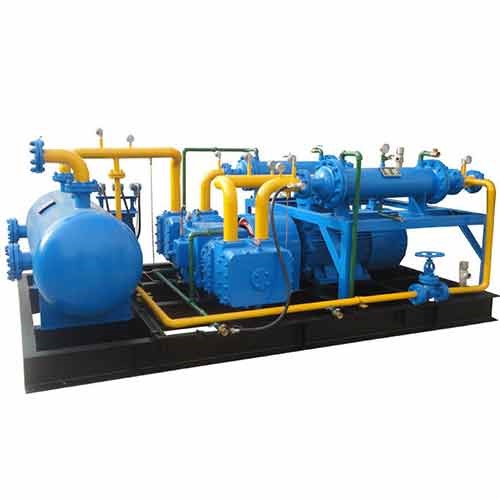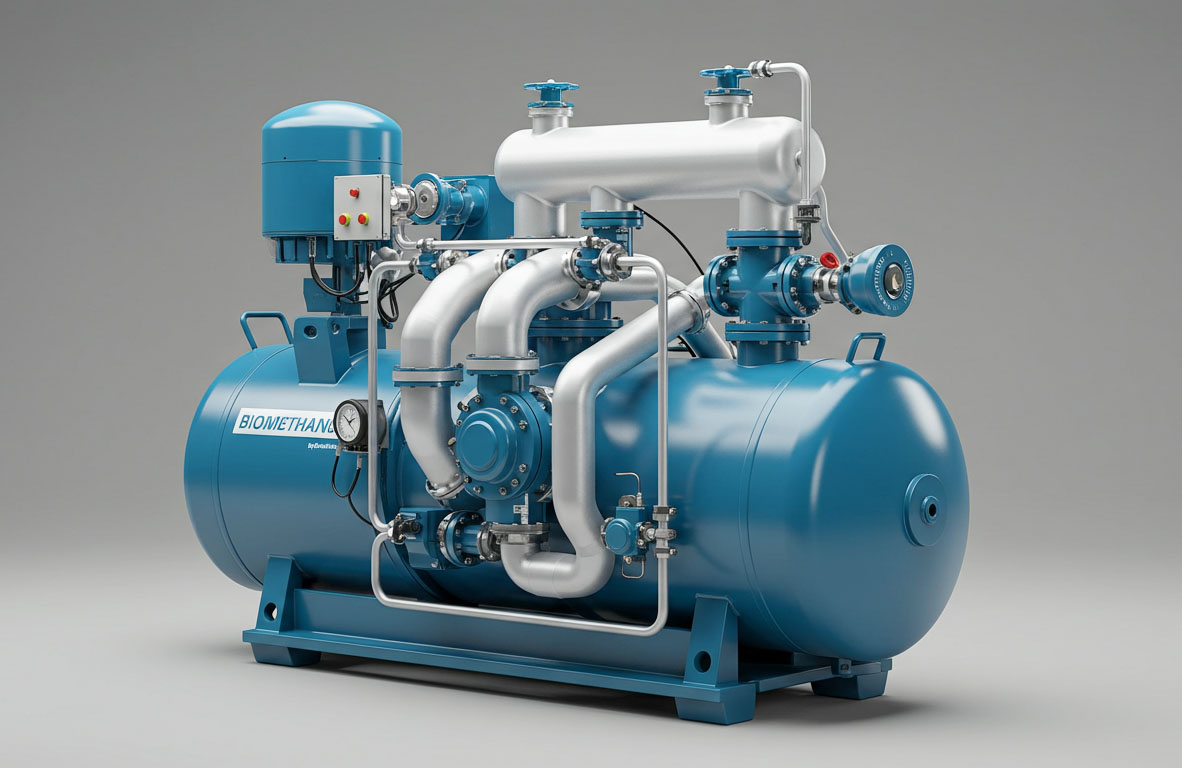Propylene Compressor: Understanding Its Function and Importance
If you work in the chemical industry, you may be familiar with propylene compressor. These machines are essential for the production of propylene, a key ingredient in plastics, solvents, and other products. In this article, you will learn more about propylene compressors, how they work, and why they are important.

Propylene compressors are used to compress propylene gas, which is then used in various chemical processes. The compressor works by taking in the gas and increasing its pressure, which makes it easier to transport and use in other processes. Propylene compressors are often used in refineries and chemical plants, where they play a critical role in the production of propylene and other chemicals.
In the next section, we will explore the different types of propylene compressors and their specific applications. Whether you are a chemical engineer or simply interested in learning more about the industry, this article will provide you with a comprehensive overview of propylene compressors and their importance in modern manufacturing.
Fundamentals of Propylene Compression

When compressing propylene, it is important to consider its unique properties. Propylene is a highly flammable gas that is commonly used in the production of plastics, chemicals, and fuel. It is also known to be reactive with certain materials, such as copper and brass, which can cause corrosion and other issues in compressors.
To properly compress propylene, it is important to use a compressor that is specifically designed for this gas. These compressors are typically made of materials that are resistant to corrosion and are designed to handle the high pressures and temperatures associated with propylene compression.
One of the key factors to consider when compressing propylene is the compression ratio. This is the ratio of the discharge pressure to the suction pressure and is an important factor in determining the efficiency of the compressor. A high compression ratio can lead to increased energy consumption and can also increase the risk of compressor failure.
To minimize the risk of compressor failure and ensure efficient operation, it is important to properly maintain and monitor the compressor. This includes regular inspections, maintenance of the compressor’s lubrication system, and monitoring of the compressor’s discharge temperature and pressure.
Overall, propylene compression requires careful consideration of the unique properties of this gas. By using a compressor that is specifically designed for propylene and properly maintaining and monitoring the compressor, you can ensure safe and efficient operation.
Propylene Compressor Design

When it comes to designing a propylene compressor, there are several factors that need to be taken into consideration. In this section, we will discuss the different types of propylene compressors, material considerations, and the thermodynamic principles involved.
Types of Propylene Compressors
There are two main types of propylene compressors: reciprocating compressors and centrifugal compressors. Reciprocating compressors are best suited for low flow rates and high-pressure applications, while centrifugal compressors are ideal for high flow rates and low-pressure applications.
Material Considerations
When designing a propylene compressor, it is important to consider the materials used in construction. Propylene is a highly flammable gas, so the compressor must be made from materials that can withstand high temperatures and pressures without igniting or corroding. Materials commonly used for propylene compressors include stainless steel, carbon steel, and nickel alloys.
Thermodynamic Principles
The thermodynamic principles involved in propylene compressor design include adiabatic compression, heat transfer, and thermodynamic efficiency. Adiabatic compression is the process of compressing propylene gas without any heat transfer, which can cause the gas to heat up and ignite. Heat transfer is necessary to prevent this from happening, and it can be achieved through intercooling or aftercooling. Thermodynamic efficiency is a measure of how much energy is lost during the compression process, and it can be improved through the use of multistage compression and variable speed drives.
In conclusion, designing a propylene compressor requires careful consideration of the type of compressor, materials used, and thermodynamic principles involved. By taking these factors into account, you can ensure that your propylene compressor is safe, efficient, and effective.
Operational Parameters

Capacity and Efficiency
When selecting a propylene compressor, it is important to consider its capacity and efficiency. The capacity of the compressor should be matched to the process flow rate to ensure that it can handle the required volume of propylene. The efficiency of the compressor is also important as it can have a significant impact on operating costs.
One way to improve efficiency is by selecting a compressor with a high isentropic efficiency. This can result in lower power consumption and reduced operating costs. Another factor to consider is the compressor’s discharge pressure. Higher discharge pressures can result in higher efficiency, but they may also require additional equipment such as intercoolers or aftercoolers.
Maintenance and Reliability
Maintaining a propylene compressor is critical to ensure its reliability and longevity. Regular maintenance should include inspections, cleaning, and lubrication of components. It is also important to monitor the compressor’s performance and vibration levels to detect any potential issues early on.
When selecting a compressor, it is important to consider its reliability. This can be determined by looking at the manufacturer’s track record and warranty. A reliable compressor can help to minimize downtime and reduce maintenance costs.
Safety Protocols
Propylene is a highly flammable gas that requires careful handling and storage. When selecting a compressor, it is important to consider its safety protocols. This can include features such as automatic shutdown systems, pressure relief valves, and explosion-proof enclosures.
It is also important to ensure that the compressor is installed and operated in accordance with all applicable safety regulations and standards. This includes proper grounding, ventilation, and fire protection measures.
Overall, selecting a propylene compressor with the right capacity, efficiency, reliability, and safety protocols is critical to ensure safe and efficient operation. Regular maintenance and monitoring can help to extend the life of the compressor and minimize downtime.
Installation and Commissioning

Site Preparation
Before installing the propylene compressor, it is important to ensure that the site is properly prepared. This includes ensuring that the foundation is strong enough to support the compressor and that there is enough space for the compressor to be installed.
You should also ensure that there is adequate ventilation and that the area is free from any potential hazards that could cause damage to the compressor or pose a risk to personnel.
System Integration
Once the site is prepared, the propylene compressor can be integrated into the system. This involves connecting the compressor to the existing piping and electrical systems.
It is important to ensure that the connections are properly made and that all components are securely fastened. Any leaks or loose connections can cause damage to the compressor or result in a hazardous situation.
Testing Procedures
After the propylene compressor is installed and integrated into the system, it must be thoroughly tested to ensure that it is functioning properly. This includes testing for leaks, verifying that all components are working as intended, and ensuring that the compressor is providing the necessary pressure and flow rate.
You should also perform a performance test to verify that the compressor is meeting the required specifications. This involves measuring the compressor’s output and comparing it to the manufacturer’s specifications.
Overall, proper installation and commissioning of the propylene compressor is essential to ensure that it operates safely and efficiently. By following the proper procedures and testing protocols, you can ensure that the compressor is functioning as intended and providing reliable service.
Regulatory and Environmental Considerations

Emissions Control
When it comes to propylene compressors, emissions control is a critical aspect to consider. The compressor must be designed to minimize emissions and comply with local, state, and federal regulations.
One way to control emissions is by using low-emission seals and packing. These seals and packing materials are designed to reduce leakage, which can lead to emissions of propylene and other harmful gases.
Another way to control emissions is by using an emissions control system. This system can include a variety of components, such as scrubbers, filters, and catalytic converters, which work together to remove pollutants from the exhaust gas stream.
Regulatory Compliance
In addition to emissions control, regulatory compliance is also an important consideration when using a propylene compressor. Depending on your location and industry, you may need to comply with a variety of regulations, such as the Clean Air Act, the Resource Conservation and Recovery Act, and the Occupational Safety and Health Act.
To ensure compliance, it is important to work with a knowledgeable and experienced supplier who can help you select a compressor that meets all relevant regulations. Additionally, you should regularly monitor your compressor and perform any necessary maintenance to ensure ongoing compliance.
By considering emissions control and regulatory compliance when selecting and using a propylene compressor, you can help protect the environment and ensure the safety of your workforce.


